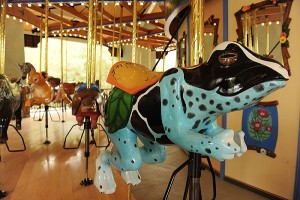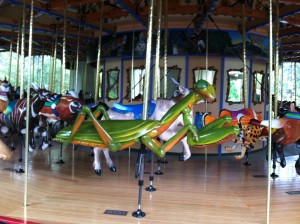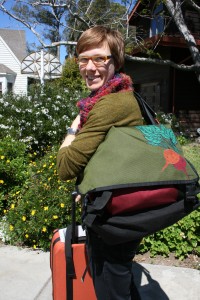
- Feeding the giraffes at the Houston Zoo
Whether it’s a rubbery-lipped giraffe gently plucking a leaf of lettuce from your hand or a rainbow-colored lorikeet sipping nectar from a tiny cup you hold, getting up close and personal with exotic animals is becoming a regular feature at zoos nationwide.
It can be as simple as buying an ice cream cone full of snack pellets to offer a camel or as involved as spending an afternoon feeding hay to the elephants or meatballs to a lion while you learn more in a behind-the-scenes tour of the zoo.
But no matter what type of experience fits your interest or budget, children are much more engaged when they can interact directly with the animals and create a personal connection with them. It makes the animals happy, too, and often has the added bonus of helping the zoos feed and fund the animals in their care.
Here are a few of my favorites:
Northeast
Philadelphia Zoo, Pennsylvania – Offer a lorikeet a cup of nectar and watch its mop-like tongue soak up the sweet liquid ($2).
Southwick Zoo, Mendon, Massachusetts – Walk through the deer forest and purchase a handful of snacks to hand feed to the speckled Eurasian Fallow deer (50 cents). You can also feed lettuce to the giraffes ($5) and seed clusters to parakeets in a walk-through aviary ($2).
Virginia Zoo, Norfolk, Virginia – Behind-the-scenes tours give families the chance to learn about and feed peanuts to the kangaroos and feed and paint a picture with the elephants and more ($200 for up to five people).
South
Lowry Park Zoo, Tampa Florida – Feed the white rhinos and give their thick skin a scratch ($3).
Palm Beach Zoo, Florida – Bathe and feed breakfast to the giant Aldebara tortoises ($20) or learn about and meet black bears while you feed them – contact is protected and safe. ($50 per person)
Zoo Atlanta, Georgia – Special animal encounters let guests meet and feed Kelly and Tara, the African elephants ($75), or hand-feed millet seed sticks to 500 free-flying parakeets ($1).
Safari Wilderness Ranch, Lakeland Florida – Enter a ring-tailed lemur habitat with a guide and feed grapes to the friendly, furry creatures ($20). Or, head into the wild guinea pig colony where they will whistle with excitement in anticipation of the food you bring them. ($5)
Midwest
Lincoln Children’s Zoo, Lincoln, Nebraska – Buy a plain ice cream cone filled with camel food for $3, place it in a clever cup holder at the end of a long pole, and feed it directly to the toothy camels.
Fort Wayne Childrens Zoo, Indiana –VIP Experiences let guests learn about the animals and engage with them: You can feed meatballs to the lions, fish to the penguins and something irresistibly delicious to the jellyfish (packages range from $150-450 for four people).
Cinncinati Zoo, Ohio – Behind-the-Scenes experiences offer special animal encounter opportunities. For example, give a bubble bath to a rhinoceros and feed her snack biscuits while you learn about the species and current efforts to save it ($1000 up for five people).
Southwest
San Antonio Zoo, Texas – Guests can purchase a cup of nectar for the lorikeets to sip while perched on their hands or resting on their shoulders ($1.50).
Houston Zoo, Texas – Offer crunchy lettuce leaves to the Masai giraffe family from an elevated platform that allows you to see all the animals in their enclosure ($5).
Phoenix Zoo, Arizona – Pat the slippery stingrays and offer them some shrimp or fish – their mouths slurp like a soft vacuum cleaner hose ($3).
West
Woodland Park Zoo, Seattle, Washington – Spend $5 for four tasty fish to feed to the penguins, or buy a seed stick for $1 to feed the birds.
Zoo Boise, Idaho – Paji, the zoo’s Sloth Bear, loves mealworms and visitors can send him a handful through a special feeding tube in the exhibit. ($3)  Or, offer Julius and Jabari, the resident giraffes, a handful of greens. ($3)
Cheyenne Mountain Zoo, Colorado Springs, Colorado – Offer a leafy snack to the giraffes ( $2) or purchase a VIP experience that lets you select three animals from a list of creatures you can meet and safely feed:  moose, zebra, grizzly bear, penguin, tiger, or elephant ($190).
San Diego Zoo –The Backstage Pass program ($99 per person) allows you to pet and feed the rhinos and touch and experience other exotic zoo residents. You can also custom design a VIP Zoo Experience for your group for a five- or eight-hour behind-the-scenes experience that includes plenty of animal interactions. ($599 and up)





